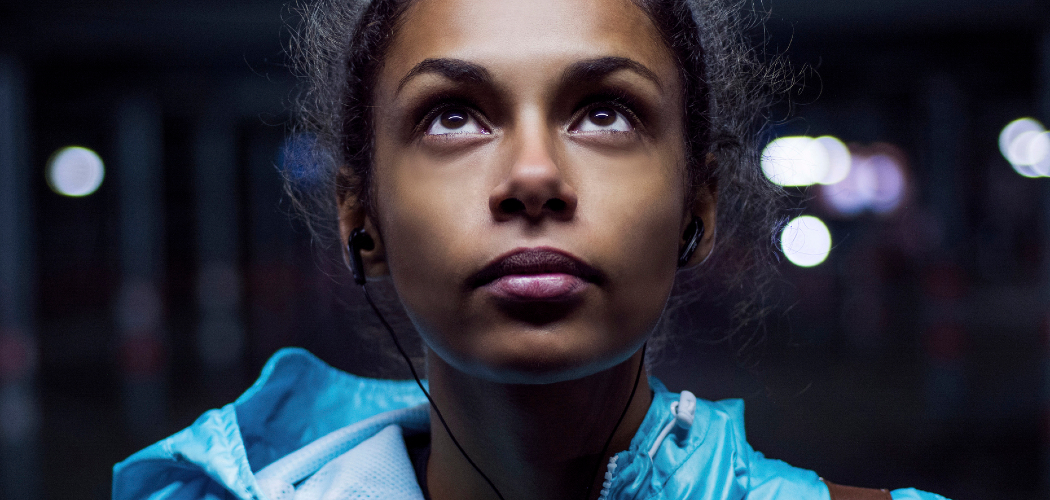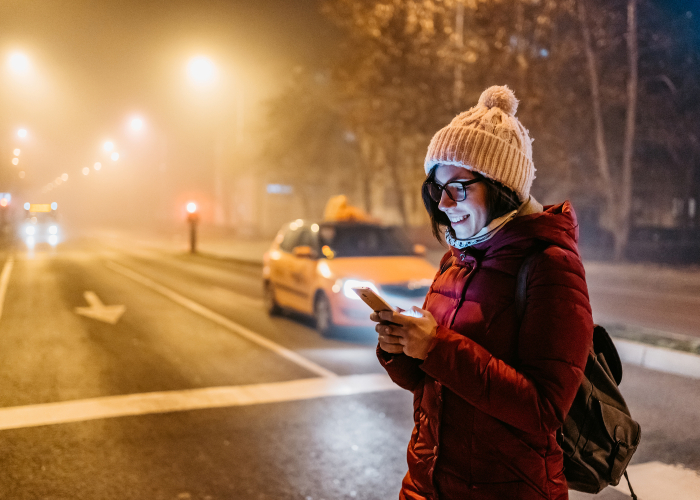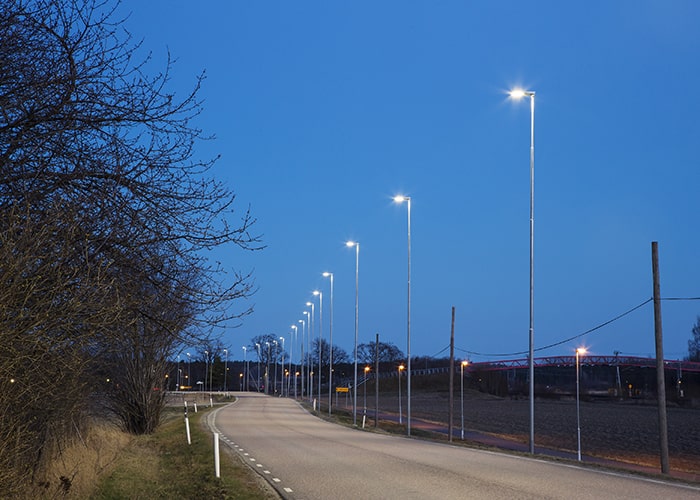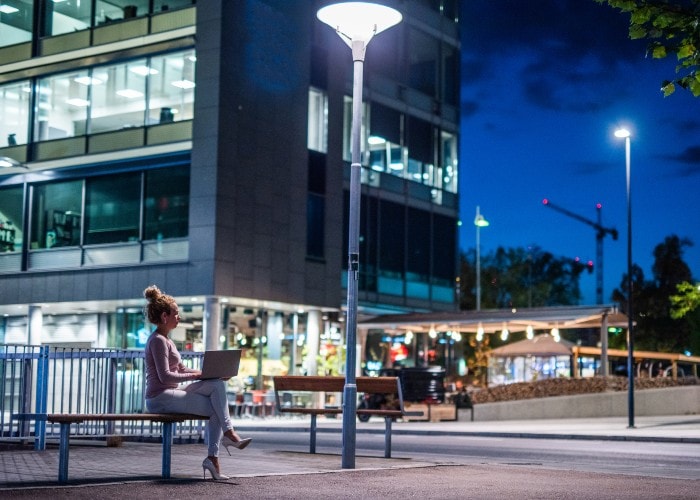Requirements of street and road lighting

The objective for all street and road lighting is to provide the optimum level of safety and accessibility for everyone. However, the correct solution must also be cost and energy-efficient and reduce light pollution to a minimum. Ensuring that all these goals are met requires experience and expertise.
Lighting and road safety
The fact that well-lit roads and streets reduce accidents is well documented in a number of Norwegian and international studies. Proper lighting can also improve accessibility and contribute to creating environments where people feel safe and comfortable. That said, ensuring an appropriate street and road lighting solution requires much more than just adding more fittings.
One significant factor is that both the state and municipalities have limited resources. As with all public spending, priorities must be based on where and how the funding can benefit the most people. Fortunately, we now have more in-depth knowledge of how lighting can best be used to reduce the risk of accidents.
Over the last few decades, a significant amount of research has been conducted regarding the connection between road lighting and accidents. Some consistent findings are that road lighting:
- Reduces accidents resulting in personal injuries by 25%
- Reduces the number of fatal accidents by 60%
- Reduces accidents involving pedestrians by 45%
- Reduces accidents at junctions by 35%
Not only do more accidents happen when it’s dark, but these accidents are also more serious. Particularly vulnerable are older pedestrians and the youngest and oldest drivers.
It’s well-known that it’s the youngest drivers, especially men, that are most often involved in accidents. The brain of an 18 -19-year-old simply isn’t fully developed, and boys in particular are both likely to seek out more risk and be less able to assess danger than other drivers. Lack of experience, less secure cars, alcohol, and more driving at night may also contribute.
Older people, however, often struggle with reduced vision and reaction times. Furthermore, older pedestrians may have mobility issues that affect their ability to avoid dangerous situations.

We also know that the positive effects of road light are higher:
- Outside densely populated areas
- On roads with higher speed limits
- In good weather
- On dry roads
A common factor is that these points describe conditions in which road users may take greater risks. All drivers can overestimate their own abilities or forget that they can’t control the actions of other drivers. The statistics suggest that proper lighting ensures that the conditions are such that the risk of accidents is reduced.
The quantity and quality of lighting
There is a considerable difference between good and bad lighting. Many factors need to be taken into account in order to get the optimal results. The research has also outlined that the following aspects are important in achieving this:
- More light (Lm), up to a point
- Uniformity of light (Uo), up to a point
- Reduced glare (TI)
- Good color rendering (Ra)
- White light, especially in densely populated areas
That more light provides leads to heightened security is hardly surprising, but appropriate lighting involves more than just quantity. Ensuring uniform light and the least possible glare is important to avoid large differences between different areas and stretches of road. This helps the eye adapt and reduces glare from wet road surfaces. Proper shielding and placing the fittings at the right height is important to preventing direct glare and to ensure the right light distribution
In addition to these general considerations, the recommended amount of light is calculated based on key factors including the type of road, the speed limit, the average amount of daily traffic (AADT) and the surrounding environment.
One key objective for street and road lighting is to ensure the safety of pedestrians. To achieve this, the lighting in pedestrian crossings is particularly important. Poorly lit crossings may in fact give a false sense of security and increase the risk of accidents. Poor lighting can lead pedestrians to believe that they have been seen and that an oncoming car will stop, while the driver is unable to see that someone is about to cross the road.

To better safety, specific guidelines have been set for lighting pedestrian crossings. The objective is to make both crossings and pedestrians as easy to see as possible. This may be solved in two slightly different ways. In either case, the goal is to create maximum contrast against the background. This can be achieved by creating:
- Negative contrast – the pedestrian stands out as dark against a lighter background
- Positive contrast – the pedestrian stands out as bright against a darker background
- Color contrast – the colors of the pedestrian’s clothes stand out against the background.
Increased lighting involves installing fittings on either side of the crossing. These must be placed at the same distance from the crossing as the height of the light source, and provide enough light for a minimum of 50m in each direction. The light itself must white and provide accurate rendering. The objective of this solution is to create a negative contrast.
Intensive lighting, however, creates a significant positive and color contrast. This method involves setting up dedicated light poles to clearly highlight and illuminate the crossings. White light with strong color rendering is required. The horizontal lighting in the crossing itself must be at least 80 lux. In addition, there should be vertical lighting of at least 10 lux in the waiting zones, and at least 20 lux in each lane approaching the crossing.
Tunnel lighting is another area that requires specialized knowledge and purpose-made fittings. Norway has the highest number of tunnels per kilometer of road in all of Europe, and DEFA has been a leading supplier within the segment for many years.
In addition to providing uniform light throughout the tunnel, it’s particularly important to provide enough light in the entry zones. To ensure that the eye has enough time to adapt from bright sunlight to a lower light level inside the tunnel, the light levels in the entry zones must be adapted to more closely resemble the daylight outside. This is also called adoption luminance. After the entry zone follows a transition zone, where the light level is gradually reduced in accordance with the standard requirements. Light conditions in the Nordics vary greatly, and control systems that automatically adjust the light to conditions and traffic are recommended to eliminate the waste energy.
Costs, efficiency, maintenance, and the environment
The positive effects of street and road lighting must always be balanced against the cost of infrastructure, maintenance, and energy use. For good results, the chosen fittings must be energy efficient, durable, simple to install, and must not require maintenance. It’s also advisable to use control systems that ensure that no more power is used than is necessary.
The transition to LED lighting over the last 10 years has reduced the amount of power we use to create the same light levels by 70-80%. The development of LED technology is continuing at a rapid pace, and products are becoming increasingly efficient. Our own street and road luminaire Elite is a prime example. Elite is one of the most used luminaires on the market, and since its release in 2014, it has been updated numerous times in order to deliver ever better efficiency. We are currently in the process of launching new editions that are 25% more energy efficient than the previous generation.

Maintenance-free fittings and that can withstand the Nordic climate can help reduce costs throughout the system’s lifetime, and ensure that the light always forks as intended. An easy installation process makes replacing or installing new systems less time-consuming. Ensuring a simple installation process was central in our development of Elite. The result i saved time and effort for installers;
“In the areas we have contracts, there are often several types of poles, both straight and cantilever, and with different diameters. In this respect, Elite is unique. They can be used anywhere, with any pole. We don’t require any extra equipment to mount them, and they only require one bit size”. – Jøran Pettersen, Gagama Elektro AS
Tunnels are an especially difficult environment to work in. Maintenance and replacement of fittings in tunnels can be particularly demanding and costly, as it may lead to the closure of one or two lanes. Choosing the right fittings is the best way to avoid unnecessary expenses. Tunnel lighting must also be cleaned regularly to remove soot and dust.
Control systems are also crucial to reducing the use of energy by adjusting the light as needed. Radar sensors can control the light depending on the level of traffic, while night reduction can lower the level of light in the evening and throughout the night when there are fewer cars.
The overall impact on the environment must be taken into account in every project, and a circular economy should be promoted as much as possible. All aspects of the process, from recyclable products and reduced packaging to responsible waste management, efficient processes, and environmentally friendly transport, are key to minimizing the impact on the environment.
Light pollution – effects and prevention
Light pollution is caused by excess artificial light that illuminates areas other than the ones intended. The effects can be significant not just for people, but also for animals and plants.
One consequence of light pollution is that most of us no longer can see the night sky. Studies show that up to 99% of Europeans live under a night sky affected by light pollution. Light from innumerable light sources on the ground is reflected in particles and vapor in the atmosphere and causes skyglow – an illuminated atmosphere that obscures the stars behind it. This is not only a loss to those interested in astronomy, but to anyone who wants to experience our natural surroundings as they truly are.
In our daily lives, however, a more immediate concern is the effect light pollution has on our sleeping patterns. Researchers are particularly concerned about the white light from LED luminaires. White light contains more blue which causes the brain to produce less of the sleep hormone melatonin. Several studies have shown that light pollution from street and road lighting can cause sleep issues and insomnia. Paradoxically, this can also lead to more tired drivers and negatively impact road safety.

Animals and plants can also be affected by too much light. A number of studies have shown that nocturnal insects and animals are influenced by artificial light, something that in turn can impact entire ecosystems. Other studies have demonstrated that too much artificial light can lead to trees and other types of plants not acclimatizing for winter in time.
In addition to these effects, light pollution must also be considered an economic problem. Excess light is a waste of money. Preventing light pollution should therefore be in everyone’s long-term interest. Fortunately, limiting light pollution from street and road lighting is simple and cost-effective.
To ensure appropriate lighting while limiting light pollution to a minimum, three measures must be put in place: The right type of fittings in the right places, appropriate shielding, and the rigt control systems.
We already have extensive knowledge of how much light should be installed in various different places in order to give the desired effect. Quality luminaires are also designed with adequate shielding. As old light sources are being replaced, advanced control systems are also often introduced, to limit light levels whenever possible. In residential areas, lighting is commonly reduced at night.
Fortuanently, street and road lighting is not the leading source of light pollution. Recent studies have concluded that light from buildings, billboards, and other installations creates around 80% of the light pollution in cities and densely populated areas. One of the main causes of increased light pollution may be the so-called “Jevons Paradox”. This paradox describes a commonly observed phenomenon where the availability of more energy-efficient and thus less costly solutions in leads to an increase in the use of lighting that in effect nullifies and exceeds the original energy savings. In other words, the market responds to more efficient solutions by using more light, and not by saving energy.
However, street and road lighting is moving quickly in the right direction. Regulations and standards ensure the implementation of appropriate, as do highly professional customers and installers.
We are happy to help with your lighting project
Every year, we supply lighting for a wide range of major road projects across the Nordics. Our professionals have unique expertise and experience and are happy to contribute to all parts of your project. We handle projects of all sizes and are often responsible for the delivery from A to Z.
“We have worked with the DEFA on several large and challenging road and tunnel projects, and they have always been very accommodating and solution-oriented. They provide us with detailed follow-ups and go to great lengths to meet our requirements. There is no doubt that they deliver quality”. – Jøran Pettersen, Gagama Elektro AS
Some of our street, road, and tunnel projects include:
- Nes, Ål and Gol Municipality in Hallingdal, Norway
- Risøy- og Åkraparken in Rogaland, Norway
- E6 Sokndal in Tronderlag, Norway
- E6 parts throught Gudbrandsdalen, Norway
- E6 Bossekop i Finnmark, Norway
- EV69 Nordkapp Tunnel, Norway
- EV69 Honningsvåg Tunnel
- The riverbank project in Ål, Hallingdal, Norway
- Street lighting for Stockholm, Sweden
- Street lighting for Malmoe, Sweden
See our street and roadlighting products
Looking to get in touch? Our contact info can be found here
